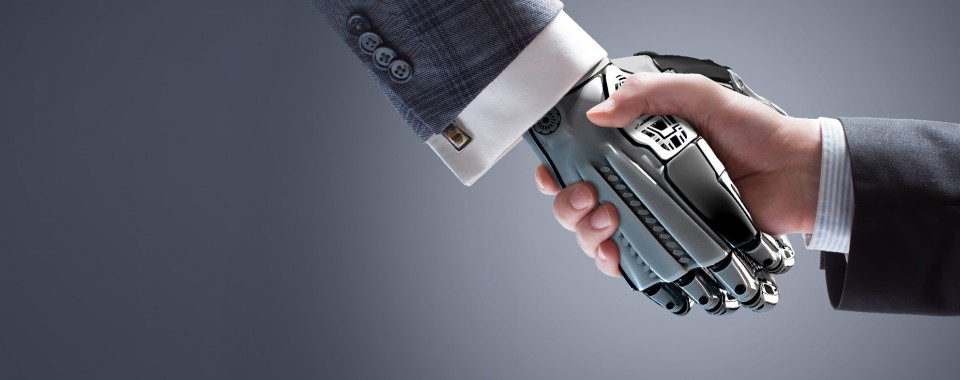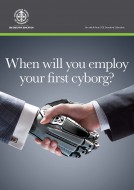
When will you employ your first cyborg?
The technology for surgically adding and replacing body parts/functions is improving every day. In the near future, “cyborgs” are going to become increasingly more common in our workplaces. The question is what consequences this will have for our organizations, managers and employees. And for our coffee breaks.
This is a trendspotting piece from guest writer Kjell Lindström.
The servicification that has occurred since the 1980s has had a huge impact on working life. Economism, the drive for efficiency and the flow of information have increased the demands on working people. Not only do you have to perform well at work and at home, but you have to look good and be rich too.
It has become increasingly acceptable to improve your appearance using various cosmetic interventions. But this is just the beginning. There are a number of technologies on the horizon that are designed to enhance our performance. Replacing weak limbs with strong robotic prosthetics, and surgically implanting chips to improve communication and memory are already possible today.
The result of mixing human and technology is called a cyborg. If we are interpreting the futurologists correctly, people with different technological enhancements are set to become increasingly common in our workplaces within the not too distant future. So let’s speculate on what consequences such a development might have:
Consequences for the law
This development is likely to create a number of gray areas in the legal sphere. If a worker is harassed by a cyber-colleague, can the latter assert that the company that implanted the chip is to blame?
There is also the question of where you draw the line between “human” and machine”. How many technological enhancements does it take before a worker turns from a person (who can be employed/hired) into a machine (that can be bought/sold/leased).
Consequences for leadership
The question is how leadership needs to adapt to take account of cyborgs. The problems under discussion include how you lead organizations that have “clusters of superhumans”. Will they form an “organizational overclass”?
Consequences for coffee breaks
In his acclaimed book “Från Prat till resultat” (From Talk to Results), Gunnar Ekman stressed the importance of informal conversations for the implementation of visions, strategies, and plans. Others have suggested that this typically Swedish workplace tradition lies behind the almost improbable string of innovations over the past century. But how would intimate conversations over coffee be affected by permanently connected half-robots with turbo-brains? Do they even drink coffee?
Conclusion
We are facing major upheavals in our working life and business world. The issues are not just about increased competition and new organizational forms. They are also about who does the work. When will you be employing (or buying) your first cyborg?
When will you be employing (or buying) your first cyborg?
Download this article:
This article is a trendspotting piece from guest writer Kjell Lindström – author and lecturer on SSE Executive Education’s Executive Leadership Program and Executive Management Program. Kjell has a passion for HR and organizational theory. And for trendspotting.
Kjell Lindström has a background as a lecturer and researcher at Uppsala University. He is editor of the trendspotting newsletter “noden trender” and is the author of books such as “Bortom tankefällan” (2013), “Äkta organisation”(2014) and “Den nakna ledningsgruppen” (2016).
In 2013, Kjell was awarded the Magnus Söderström Prize by Linnaeus University and the Union for Professionals for his contribution to Swedish HR.



